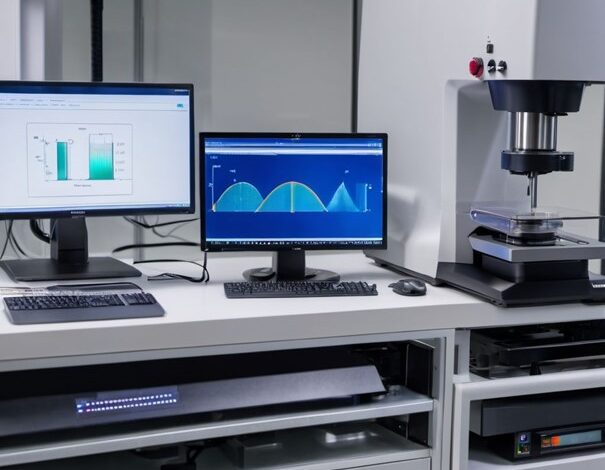Rheometer: 5 Keys for Optimal Selection

In the extensive world of materials science and industrial processes, selecting the right rheometer for our specific applications often feels like navigating a complex puzzle. Each piece must fit precisely to unlock the full potential of material characterization, R&D, and process optimization.
You can also read: Rheology in Optimizing Thermoplastic Polymer Performance
Here the five key factors to consider:
1. In-House Rheology Expertise:
Having a strong understanding of rheology is essential for utilizing a rheometer effectively. Proficiency in rheological principles empowers users to select appropriate test protocols and interpret complex data accurately. Ignoring factors like temperature, shear rates, and time-dependent phenomena can lead to misleading results, impacting process efficiency and product quality at the best price-benefit rate possible.
2. Material and Application Specifics:
Before investing in a rheometer, it’s crucial to understand the unique rheological behavior of the material and the specific demands of the intended application. Each substance, be it a polymer blend, a food emulsion, or a pharmaceutical formulation, exhibits distinct rheological behaviors influenced by factors such as molecular structure, particle size, and intermolecular interactions. Aligning instrument capabilities with application demands, including the relevant shear rate range, is essential for accurate characterization. This includes the most important consideration of the shear rate range relevant to the application, necessitating rheometers capable of operating within the desired shear rate regime.
3. Trustworthy Supplier:
Choosing a reliable rheometer supplier is paramount. Ongoing technical support, training, and maintenance services are essential for optimal instrument performance and user proficiency. Additionally, assessing the instrument’s longevity and the vendor’s commitment to ongoing development protects against premature obsolescence. A reputable provider offers not only cutting-edge instrumentation but also comprehensive support infrastructure to meet diverse industry needs.
4. Hardware and Software Match:
Evaluate the hardware and software capabilities of a rheometer carefully can make easier the most complicated test getting complex and useful material properties and data quality. Ensure that the instrument’s features effectively address real-world application needs rather than just looking impressive on paper. This may involve discussions and benchmarking between potential suppliers to clarify any ambiguities or misconceptions.
5. Total Cost of Ownership and Time to Solution:
Consider the total cost of ownership beyond the purchase price, including maintenance, service contracts, and upgrades. Minimizing the time to obtain reliable rheological data enhances efficiency and productivity. Balancing risks and rewards alongside long-term business goals enables stakeholders to make informed decisions that align with their objectives.
This is a concrete macro guideline for assessing the purchase of a rheometer or selecting a service or partnership to characterize and understand the own application, bridging the gap between science and practice. Of course, it’s essential to delve deeper into each topic but the main structure is already built.
To read more: Key Considerations when Choosing a Rheometer
